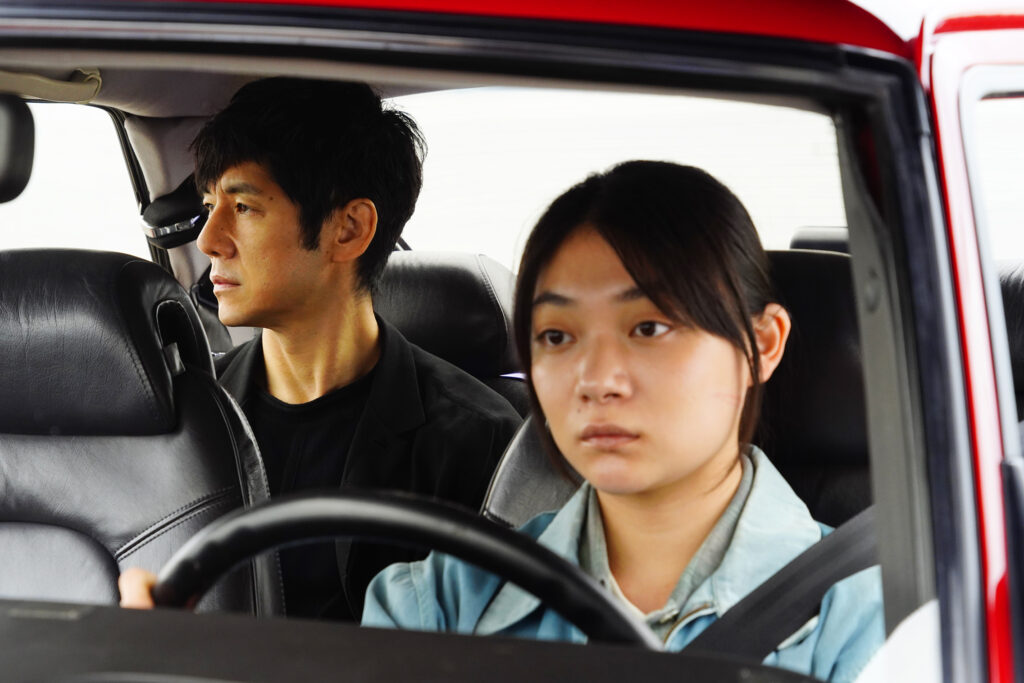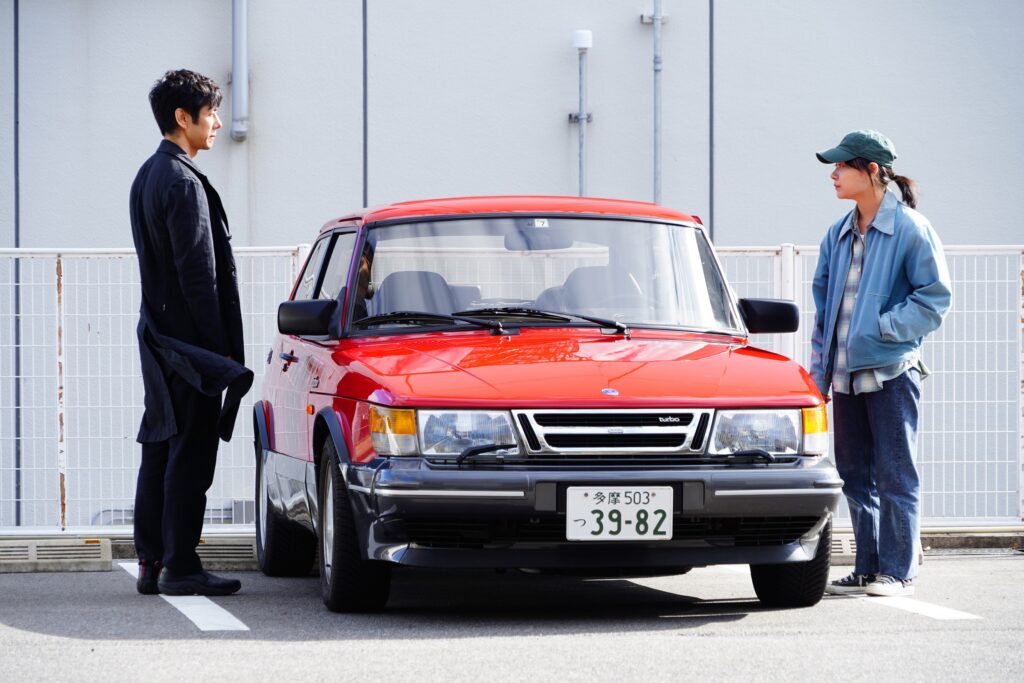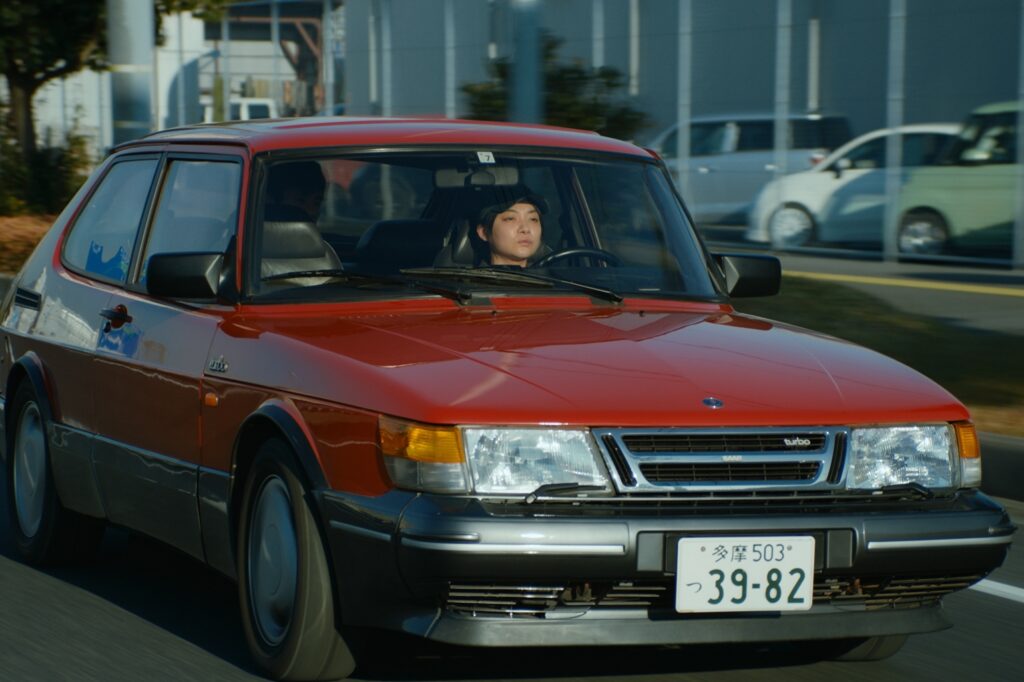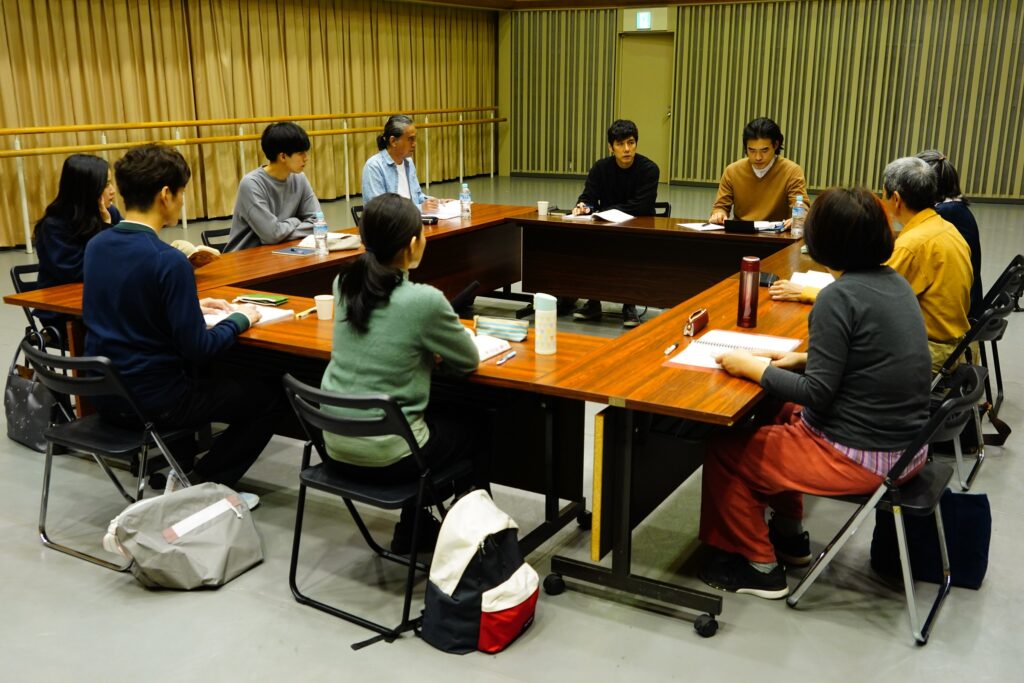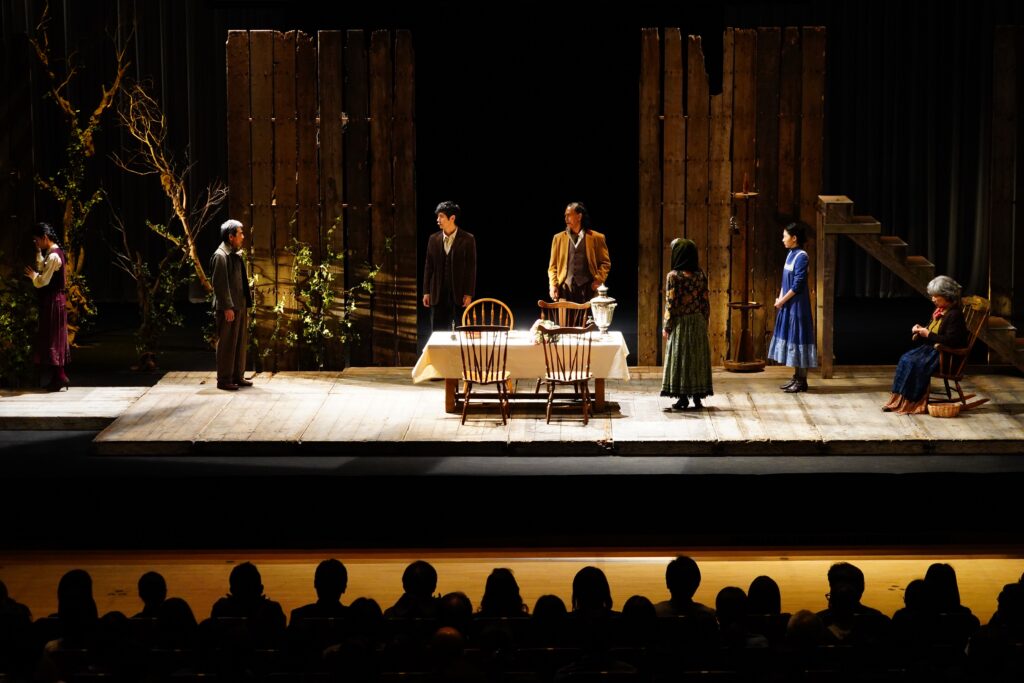he 94th annual Academy Awards was presented on March 28th (Japan Standard Time). Ryusuke Hamaguchi’s film Drive My Car was nominated in four categories: Best Picture, Best Director, Best Adapted Screenplay, and Best International Feature Film. The film won the category for Best International Feature Film. We asked critic Shun Fushimi to write a column about the film that gained international recognition.
*The following contains spoilers of the film.
The film Drive My Car, directed by Ryusuke Hamaguchi, won Best Screenplay at the 2021 Cannes Film Festival and was nominated for four Academy Awards. This is the first film by a Japanese director to ever be nominated for the Best Picture Academy Award. Hamaguchi has continued to make excellent and ambitious films. First off, we should embrace Drive My Car for gaining international recognition. In this column, however, I would like to emphasize the uneasiness I felt when watching the film. I offer my critique precisely because it has achieved critical acclaim.
Drive My Car is thought to be a story about a man admitting to and accepting his weaknesses, where viewers experience being “properly hurt”, a phrase used in the film. Kafuku (a director played by Hidetoshi Nishijima) uses the performance of Uncle Vanya and his relationship with Misaki (his driver played by Toko Miura) to come to terms with the complex feelings he has about his late wife and eventually admits to his weaknesses. Recurring smoking scenes and rotating seating arrangements reflect the changes in emotional distance between the two. But is Drive My Car truly a film about a protagonist who exposes his weaknesses and who works to narrow the distance between him and those around him? On the contrary, I feel that this film obscures the conflict that people have with one another.
Drive My Car’s Effortlessness
Before I write about the reality behind this obscured conflict, I want to mention that this film was rich enough in other aspects to be able to conceal such things. If I were to describe the overall texture of Drive My Car in a word, it would be “smoothness”, or “effortlessness”, deriving from its cinematography and sound design. Hidetoshi Shinomiya’s long, overhead shots of the car repeat. The cinematographer captures the bright red Saab 900 effortlessly within the frame as it drives through the Chuo expressway and Hiroshima’s national roads. Eiko Ishibashi’s compositions for the soundtrack, played by band members Jim O’Rourke and Tatsuhisa Yamamoto, are also notable. A mixture of Burt Bacharach and Chicago post-rock (or perhaps Argentine contemporary folk musicians Puente Celeste or Andrés Beeuwsaert), the music takes full advantage of drum brushes, double bass, piano, and acoustic guitar to effortless tell a tale of sorrow and warmth. The music and shots of the car coincide once the credits roll, forty minutes into the film. At that moment, you’re overcome with comfort, much like on a perfect autumn day. Not too hot, not too cold. The feeling is surprisingly rare, and thus invaluable. Sound mixer Miki Nomura masterfully blends the actors’ voices and environmental sounds recorded by Renmei Izuta with Eiko Ishibashi’s music. The recording of the Uncle Vanya reading, a significant motif in the film, is also delicately placed within the soundscape. The film in its entirety feels like a soft touch, tremendously smooth throughout.
The screenplay also possesses its own smoothness. As mentioned above, Drive My Car progresses along with rehearsals of a production of Chekhov’s Uncle Vanya. The process leading up to the performance and the process of Kafuku’s acceptance of loss are aligned, and act to help the audience understand the story smoothly. Uncle Vanya and other dramas by Chekhov are considered classics in the West, and are often performed at theatres in Japan as well. Uncle Vanya’s Vanya, a middle-aged man full of regret and self-despair, is supported by his niece Sonia, a homely girl would would conventially be considered less fortunate. Vanya and Sonia’s relationship is a reflection of Kafuku and Misaki’s. This context makes the story more legible to the viewer, and may prove to be useful, especially for foreign audiences that may not understand Japan’s climate or culture (or, say, the geographical and cultural distance between Tokyo, Hiroshima, and Hokkaido, in which the film takes place). The film spans a whopping 179 minutes, a fairly long running time. Even without the spectacle that comes with the use of extravagant footage, profound music, or flashy action scenes, the film never feels dull, thanks to the smoothness of its cinematography, sound, and screenplay.
Thinking back, 2020 Academy Award Best Picture winner Parasite and 2021 Best Picture winner Nomadland have that in common; the footage, sound, and story all effortlessly align with one another. Though their styles differ (in terms of cinematography, for instance, Parasite emphasized depth while Nomadland focused on wide, scenic shots and closeups of the characters), both films share a smoothness that make viewers lose track of time. Both films are also by Asian directors, like Drive My Car. If you think of these two points as being the focus of the Academy of recent years, it makes sense why Drive My Car was also nominated.
What’s Hidden Behind the Effortlessness
Whether you watch Drive My Car from the perspective of movie tradition, its relationship to the audience, or its successful award history, the film’s smoothness is its main sell. However, its silky smoothness also obscures the tense human relationships and ugly self-consciousness displayed in the film. There is a point in many of director Ryusuke Hamaguchi’s films, like in Passion, Intimacies, Happy Hour, or Asako I & II, where the balance between the characters’ relationships collapses and triggers repressed feelings to overflow. In a scene in Asako I & II, a Chekhov play that one character is in sets off an altercation between four people who, up until then, were conversing cordially with one another. There, you feel a sudden shift in the center of gravity that is inperceivable.[1] Anton Chekhov himself was a novelist/playwright who often used the tension between individual characters as a means of change. In comparison, Drive My Car lacks the dynamism that allows characters to reach mutual transformation.
[1] In Tetsuya Miura’s Happy Hour Ron, (Hatori Press, 2018), he uses the keyword “center of gravity”. The shift in the center of gravity provides a substantial effect in Ryusuke Hamaguchi’s films.
There are some exceptions, though. The scene in which the young actor Takatsuki (played by Masaki Okada)’s demeanor flips on a dime during his conversation with Kafuku in the car allows the viewer to experience the eeriness of Takatsuki’s sudden transformation. Hamaguchi’s use of straight-on reaction shots highlights the abrupt change in dynamic between the two characters, putting the audience in a deeply uncomfortable position. He does this often in his films. But you still can’t ignore that the driver, Misaki, is relegated to a fly on the wall. Tensions rise while Takatsuki and Kafuku talk about Kafuku’s late wife Oto, and Misaki is left to listen quietly to this unpleasant conversation. Kafuku even mentions, “there’s no need to worry about her ”, fully expecting Misaki not to chime in. In many of Hamaguchi’s films, the maintained balance between characters changes when three or more people appear in a space at a given time. But Toko Miura’s character Misaki remains a character that doesn’t get in the way of others’ relationships. Both in her first conversation with Kafuku and at the Korean couple’s dinner table, Misaki absorbs the tension in the air. When Kafuku starts to show his weaknesses, Misaki starts talking about her own past, as if trying to maintain peace. Misaki acts as a cushion for Kafuku, passively accepting him in any form. Kafuku uses her cushion-like malleability as comfort. I’d suggest that instead of changing to accept his weaknesses, Kafuku has only grown dependent on Misaki’s kindness. Throughout the film, Kafuku seems to be a character who only sees the women around him as convenient fantasies. The embrace Kafuku and Misaki share at Misaki’s home feels one-sided; the hug didn’t happen as a mutual response. Even the bird that happens to fly across the snowy mountain scenery, however beautiful, feels all the more opportunistic.
The fact that Kafuku’s wife Oto tells stories after sex exudes male-gaze fantasy to begin with. Some people may fault Haruki Murakami’s original text for this shortcoming. It’s true that Murakami novels are often criticized for their portrayals of female characters. Although many of his works include his personal illusions of women, the reason for my feelings of uneasines do not come from the stories the film is based on. The screenwriters modeled Oto after two different characters from separate Murakami short stories. The wife in “Drive My Car”, who keeps cheating on her husband and eventually dies of a sickness, and the unknown woman from “Scheherazade”, who cares for a man that is unable to leave his house and who tells stories after having sex, were blended together to create Kafuku’s wife. There’s nothing peculiar about the beautiful wife who cheats on her husband, or about the woman who tells stories every time she has sex. But when a wife starts telling stories after sex, that’s when things start feeling off. The fact that the woman that Kafuku has spent over 20 years with still possesses an element of mystique to him somehow feels unrealistic, and did not sit well with me.
Some may say that screenplay and questionable character choices can be overlooked if you only consider cinematography and editing in what makes a good film. Some may think that I’m neglecting the essence of the film by focusing too much on the story. In the case of Drive My Car, however, the plot cannot easily be ignored since the direction of the film as a whole is very closely tied to the progression of the story.
Kafuku’s Uncle Vanya rehearsals are quite unique, but they may feel familiar to those who have background knowledge on Hamaguchi’s films. Kafuku urges the actors in his play to recite the dramatic text without emotion. He asks them to read it as is, over and over again. This type of table read is a form of practice that Hamaguchi himself introduced in his read-throughs after filming Happy Hour. In other words, the fictional direction of Kafuku overlaps with Hamaguchi’s real direction.
In the film, the table read is meant to function as a device for the actors to better listen to their acting partners’ words, as to react more intuitively. This means that the relationships between the co-stars is of the utmost importance. Takatsuki, who plays Vanya in the production, is unable to participate in the tail end of rehearsals because of an incident he’s involved in. In a performance that relies so heavily on the relationship between the actors, the absence of one performer means that this carefully maintained balance will collapse. Another actor stepping in will not easily rectify the damage. As most viewers guessed, the person who steps in as the role of Vanya is Kafuku, who is an actor himself. Even with the director stepping in, one would expect the rehearsals to become onerous. But on the contrary, there are no scenes that include the rehearsal process after Takatsuki’s departure. Instead, we see Kafuku and Misaki travel to Misaki’s hometown by car, from Hiroshima to Hokkaido. We see Kafuku’s rebirth = Vanya, instead of seeing the production’s reconstruction. But as I mentioned earlier, this scene ends with Kafuku leaning on Misaki as an emotional cushion. We don’t see reciprocal influence when Kafuku and Misaki are embracing, only Kafuku’s one-sided resolve. I’m not saying he should be blamed for leaning on someone while he’s going through personal emotional strife. But I do wonder if the mutual human understanding that the production relies on in the film truly reflects Kafuku’s personal drama. Kafuku’s story disassociates from Uncle Vanya completely, and even slights the production.
Consequently, the performance of Uncle Vanya, supposedly the climax of the film, feels empty. Kafuku’s performance is overly theatrical, and we see no change in Nishijima Hidetoshi’s character. Even when he’s visibly rattled when he goes backstage during the performance, his acting reminds us of his Vanya performance right after his wife’s death. We’re unable to hear a new voice that comes from “deep within”,[2] to borrow Hamaguchi’s own terms. The play itself looks old-fashioned, like a bland shingeki play, and makes you wonder what all that table reading was for. Yurim Park, who recites Sonia’s monologue at the end in Korean Sign Language, is outstanding (especially her short bursts of breath). But she had already shown great promise in her audition and in the park rehearsal. In the end, we see no transformation between the actors during the final performance. We only see Nishijima grow teary-eyed as he watches Yurim Park sign. Hence why one cannot deny that the purpose of the Uncle Vanya performance, and of Misaki, is merely to comfort Kafuku. As a result, Kafuku is never really able to accept others for themselves, and therefore unable to be be “properly hurt”. What this film portrays is Kafuku’s “changelessness”. Furthermore, the smoothness of Drive My Car that I mentioned earlier functions to brilliantly obscure this “changelessness”.
[2] Hamaguchi, Ryusuke, Nohara, Tadashi, and Takahashi, Tomoyuki. Kamera No Mae De Enjiru Koto Eiga Happy Hour Text Shusei, Sayusha, 2015, p. 53.
Perhaps if this was a film by any other director, this “changelessness” wouldn’t have felt so prevalent. Maybe I would’ve said, “the story’s a bit convenient, but there are plenty of great cinematic elements”. There are several fantastic scenes outside of the “smooth” ones I previously mentioned. The list of admirable scenes is endless. The shots where the camera slowly gets closer in a frame that just barely fits the Saab 900, and the three shots of the fountain in Hiroshima International Conference Center (the prayer fountain), to name a few, are exceptional. You may think that’s not enough. But there are changes that come from exposing the hidden elements in Ryusuke Hamaguchi’s films, or changes that arise from picking up on those signs of transformation. He chose to focus on filming the permanent pain and its ugliness as is. That’s what I believe Hamaguchi wanted, or better yet, what he strived to accomplish. I couldn’t ignore a few self-serving parts of the film because it would truly be a great film otherwise.
Perhaps I’m merely forcing my illusions of Hamaguchi’s past onto his present. Maybe. Drive My Car is fundamentally different from Hamaguchi’s other films. I wanted to suggest this difference by indicating the acute uneasiness I felt while watching the film. Because of the film’s wide acclaim, I couldn’t disregard the pain I felt from it. I couldn’t help but feel that something important was obscured and removed from Drive My Car, and it was necessary to be “properly hurt” by that fact.

